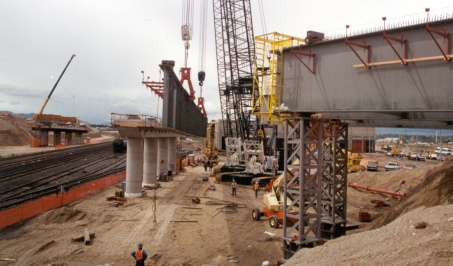ICE Low Carbon Lifed Panel
In the latest of a series of blogs by --KLH Sustainability, Kirsten Henson and Sophie Frith explain the objectives of the ICE Low Carbon Lifed Panel. Kirsten has been a contributing member of the Panel since 2012.
In November 2011 the ICE (Institution of Civil Engineers) launched Building a Sustainable Future – ICE low carbon infrastructure trajectory – 2050. The report takes a whole-life view of infrastructure and considers how benefits can be maximised and carbon minimised.
The report set out 5 priorities aimed at government and industry and 5 commitments for the ICE. The Low Carbon Lifed Panel was established to deliver these ICE commitments, and is generating two outputs for launch in early 2014:
- The first output is a high level carbon footprinting standard for infrastructure projects to generate consistency and transparency in the use of carbon as part of a wider decision-making framework. It builds on the Panel’s expertise in using carbon footprinting as a value-adding tool and draws on European Standards for the Methodology for the Assessment of the Environmental Performance for Buildings.
- The second output is a thought piece on how to encourage the UK to innovate, lower costs and improve the whole-life value of infrastructure assets. It tackles the role of codes and standards, education and industry in the transition to a low-carbon economy.
There is a widespread perception within the UK that in-house company standards for infrastructure construction are complex, confusing and sometimes contradictory. Time and experience has shown that the often constraining codes and standards act as a barrier to innovation. The “traditional” approach of using standards and specifications to set out client requirements and subsequently detail design means designers and contractors do not have the necessary freedom to innovate. Reliability and a long track-record of any given design or construction methodology ordinarily take precedence.
Inevitably, achieving the right balance will not be straightforward. It requires a shift in mind-set from “we’ve always done it this way” to a collaborative discussion. Education is required beyond the realms of our universities. Clients, manufacturers, suppliers, users, contractors and consultants need to bring their expertise and experience together to provide the right framework for innovation and to allow adequate time for innovative design.
The Low Carbon Lifed Panel attempts to address some of these barriers and provide simple tools to drive the implementation of innovation to aid economic growth within an industry renowned for being set in its ways.
Featured articles and news
One of the most impressive Victorian architects. Book review.
RTPI leader to become new CIOB Chief Executive Officer
Dr Victoria Hills MRTPI, FICE to take over after Caroline Gumble’s departure.
Social and affordable housing, a long term plan for delivery
The “Delivering a Decade of Renewal for Social and Affordable Housing” strategy sets out future path.
A change to adoptive architecture
Effects of global weather warming on architectural detailing, material choice and human interaction.
The proposed publicly owned and backed subsidiary of Homes England, to facilitate new homes.
How big is the problem and what can we do to mitigate the effects?
Overheating guidance and tools for building designers
A number of cool guides to help with the heat.
The UK's Modern Industrial Strategy: A 10 year plan
Previous consultation criticism, current key elements and general support with some persisting reservations.
Building Safety Regulator reforms
New roles, new staff and a new fast track service pave the way for a single construction regulator.
Architectural Technologist CPDs and Communications
CIAT CPD… and how you can do it!
Cooling centres and cool spaces
Managing extreme heat in cities by directing the public to places for heat stress relief and water sources.
Winter gardens: A brief history and warm variations
Extending the season with glass in different forms and terms.
Restoring Great Yarmouth's Winter Gardens
Transforming one of the least sustainable constructions imaginable.
Construction Skills Mission Board launch sector drive
Newly formed government and industry collaboration set strategy for recruiting an additional 100,000 construction workers a year.
New Architects Code comes into effect in September 2025
ARB Architects Code of Conduct and Practice available with ongoing consultation regarding guidance.
Welsh Skills Body (Medr) launches ambitious plan
The new skills body brings together funding and regulation of tertiary education and research for the devolved nation.
Paul Gandy FCIOB announced as next CIOB President
Former Tilbury Douglas CEO takes helm.

























Comments
To start a discussion about this article, click 'Add a comment' above and add your thoughts to this discussion page.